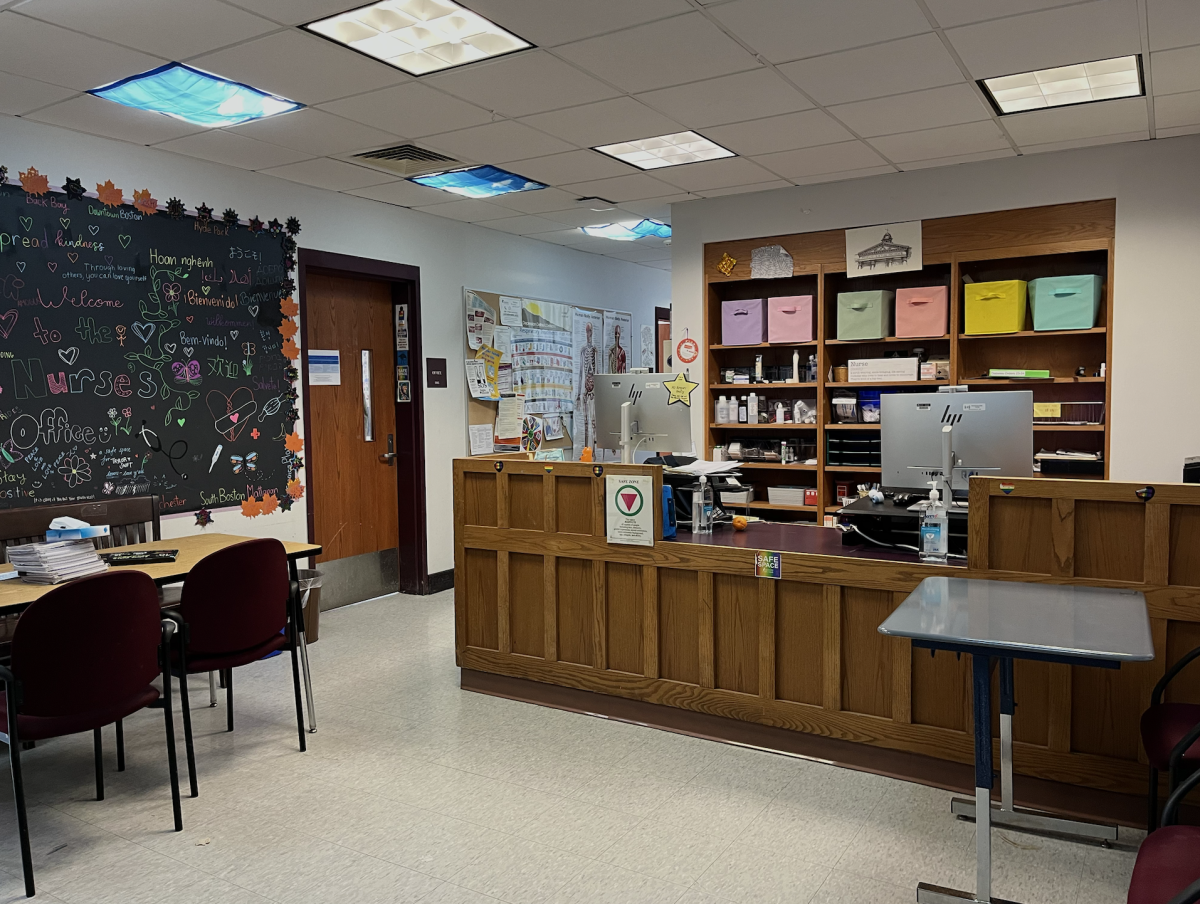The ground floor of Boston Latin School contains several spaces that were originally built and utilized as nuclear shelters. A nuclear shelter, also known as a fallout shelter or bomb shelter, is a confined space designed to shield occupants from the harmful effects of radiation resulting from a nuclear explosion.
During the nuclear tensions of the Cold War (1947-1991), many governments initiated civil defense programs aimed at protecting civilians. Nuclear shelters emerged as prominent strategies in response to a perceived threat of nuclear attack.
Beginning in the 1960s, the United States federal government directed the Army Corps of Engineers and civilian architects to inspect buildings that might be appropriate for nuclear shelters. Feasibility as a public nuclear shelter was marked by a protection factor of 40, meaning the radiation level behind the protective barrier is reduced by a factor of 40 compared to the level outside the barrier. A capacity for at least 50 people with ten square feet of space per person was also necessary.
Consequently, many schools were identified as suitable buildings for public nuclear protection spaces. These shelters were located underground or in the centermost of sturdy structures, marked with a yellow and black trefoiled sign. BLS archivist Ms. Valerie Uber explains, “Boston Latin School was designated as a public fallout shelter, and “Fallout Shelter” signs were placed outside and inside the school.”
Although all signs were removed by the early 2000s, remnants of the nails that held up the plaques remain visible on some walls.
The rooms on the ground floor of BLS without windows or external ventilation were all considered available nuclear shelters. Head custodian Robert Jelley notes, “the biggest area and the lowest area is the boiler.” In the boiler room, two recessed spaces were considered the safest areas of the school in the case of a nuclear explosion. Today, all of the building’s shelters have been repurposed into storage and utility spaces.
In the 1960s, the school also conducted air raid drills during which students practiced evacuating to the nuclear shelters in case of a nuclear attack. Some students were appointed as “drill wardens” or “air raid wardens.”
“When they had those air raid drills […] the student leaders who were the air raid wardens or the drill leaders would be sure that everyone was out of the hallway and that everyone was following the rules,” AP United States History teacher Ms. Ashley Balbian informs.
While few nuclear shelters remain present today, the design and construction of nuclear shelters at BLS remain a reminder that the effects of the events students learn in history class are ubiquitous to the spaces they frequent.







